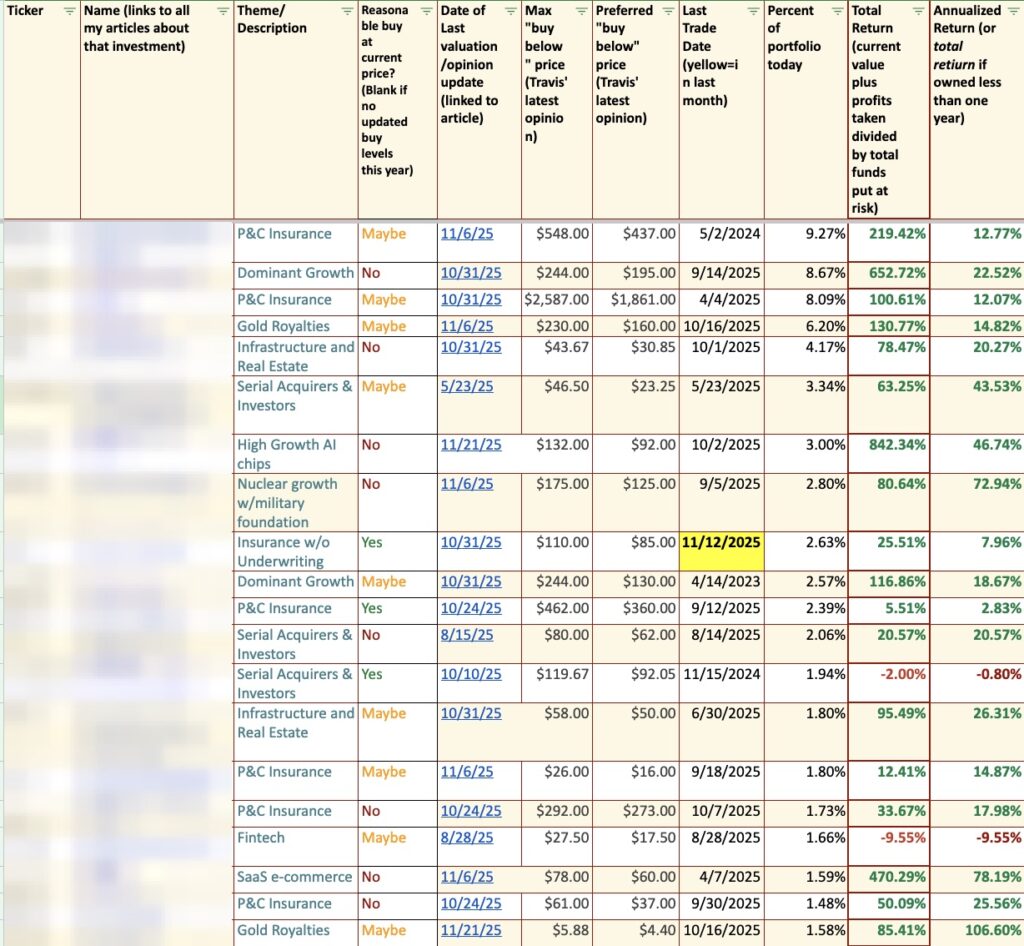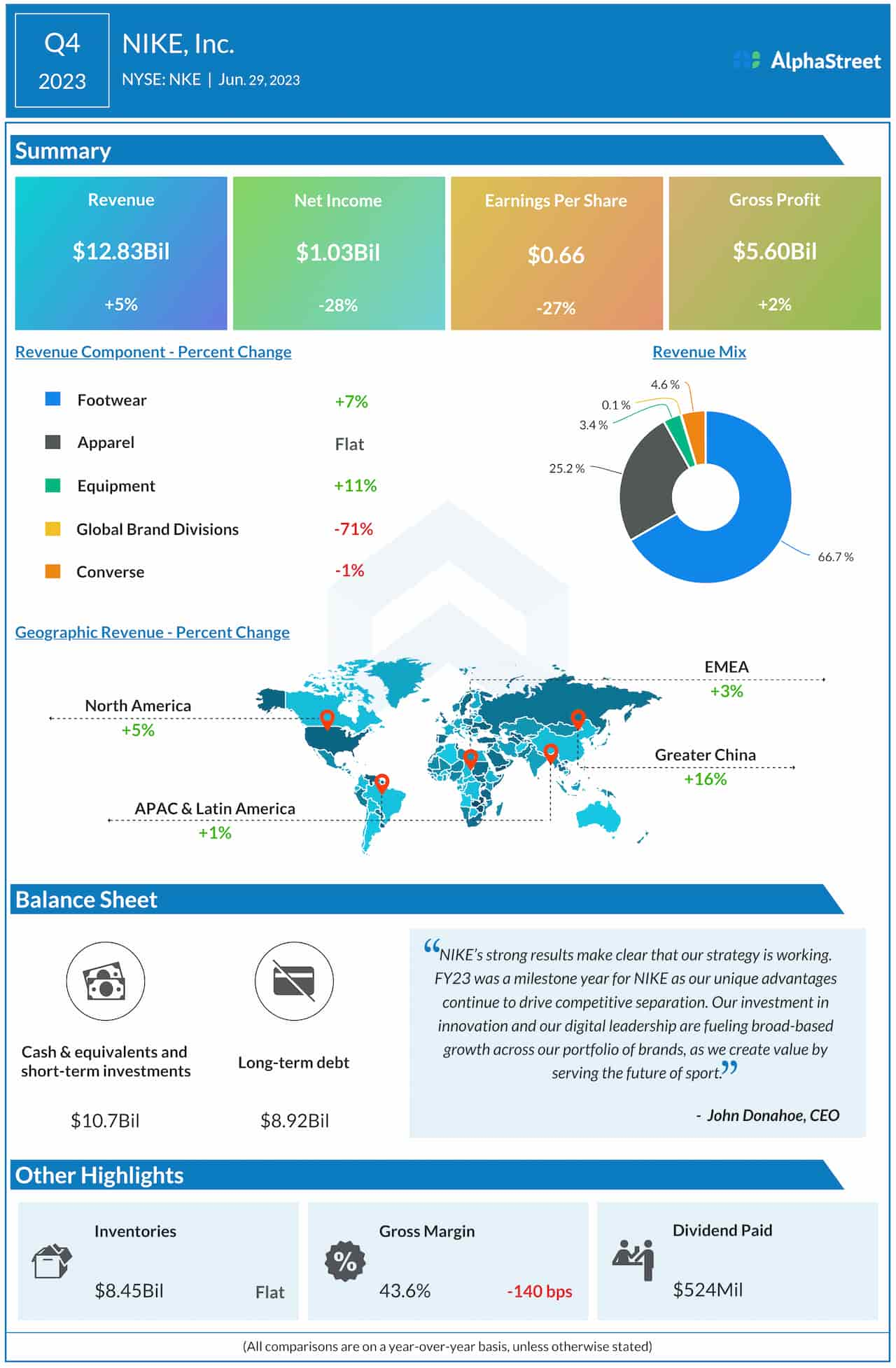Good Saturday morning to all of you here on r/stocks! I hope everyone on this sub made out pretty nicely in the market this past week, and are ready for the new trading week ahead. 🙂
Here is everything you need to know to get you ready for the trading week beginning October 31st, 2022.
Stocks rose on Friday despite a tumble in Amazon shares after economic data pointed to slowing inflation and a steady consumer.
The Dow Jones Industrial Average closed 828.52 points, or about 2.6%, higher at 32,861.80. The S&P 500 added nearly 2.5%, to close at 3,901.06. The Nasdaq Composite ended up about 2.9%, to close at 11,102.45.
On a weekly basis, the major indexes made notable gains. It was the fourth positive week in a row for the Dow, a first since a five-week streak ending in November 2021. The 30-stock index is up 5.7% this week in its best performance since May. It’s also on track for its best month since January 1976.
The S&P 500 and the Nasdaq are up 3.9% and 2.2%, respectively, for the week.
The stock market has fractured this week as investors dumped technology shares following weak results and outlooks from Microsoft, Alphabet and Meta and rotated into economically sensitive stocks that will benefit if the U.S. economy can skirt a recession.
At the same time, investors have found hope in data that came out over the course of the week indicating inflation may be easing, increasing optimism that the Federal Reserve could break from its trend of 75 basis point rate hikes after the November meeting.
“Inflation data really wasn’t that bad. The earnings have been not great, but not awful,” said Megan Horneman, chief investment officer at Verdence. “When you have that middle of the road, that helps equity markets.”
Amazon plunged by 6.8% after the company posted weaker-than-expected quarterly revenue and issued disappointing fourth-quarter sales guidance Thursday. Apple shares ended Friday up 7.5%. The tech giant reported weaker-than-anticipated iPhone revenue on Thursday, but beat Wall Street estimates for quarterly earnings and revenue.
Apple and other more positive performers, like Intel, have given investors footholds within what some see as a particularly tumultuous tech sector, subsequently providing upward pressure to the tech-heavy Nasdaq, said Jay Hatfield, CEO of Infrastructure Capital Management. He said the market was also boosted by oil giants Chevron and Exxon Mobil, up about 1.2% and 2.9%, respectively, after both reported beating expectations before the bell.
“Apple’s really the lone star, if you will, of the mega-cap tech stocks,” Hatfield said. “It’s just a unique market where bad is terrible, but OK is good, so, on a relative basis, it’s spectacular.”
The market got a boost after the core personal consumption expenditures price index in September increased 0.5% from the previous month and 5.1% from a year ago, still high but mostly in-line with expectations. This is the preferred gauge of inflation for the Federal Reserve. Personal spending rose 0.6%, more than expected, the data showed.
This past week saw the following moves in the S&P:
S&P Sectors for this past week:
Major Indices for this past week:
Major Futures Markets as of Friday’s close:
Economic Calendar for the Week Ahead:
Percentage Changes for the Major Indices, WTD, MTD, QTD, YTD as of Friday’s close:
S&P Sectors for the Past Week:
Major Indices Pullback/Correction Levels as of Friday’s close:
Major Indices Rally Levels as of Friday’s close:
Most Anticipated Earnings Releases for this week:
Here are the upcoming IPO’s for this week:
Friday’s Stock Analyst Upgrades & Downgrades:
November is Top NASDAQ Month in Midterm Years
November maintains its status among the top performing months as fourth-quarter cash inflows from institutions drive November to lead the best consecutive three-month span November-January. However, the month has taken hits during bear markets and November 2000, down –22.9% (undecided election and a nascent bear), was NASDAQ’s second worst month on record—only October 1987 was worse.
November begins the “Best Six Months” for the DJIA and S&P 500, and the “Best Eight Months” for NASDAQ. Small caps come into favor during November, but don’t really take off until the last two weeks of the year. November is the number-two DJIA, S&P 500 (since 1950), and NASDAQ (since 1971) month. November is best for Russell 1000 (since 1979) and Russell 2000 (since 1979). Average performance in all year ranges from 1.7% from DJIA and S&P 500 to a solid 2.3% by Russell 2000.
In midterm years, November’s market prowess is relatively unchanged. DJIA has advanced in 14 of the last 18 midterm years since 1950 with an average gain of 2.5%. S&P 500 has also been up in 14 of the past 18 midterm years, gaining on average 2.6%. Small caps perform well with Russell 2000 climbing in 7 of the past 10 midterm years, averaging 3.3%. The only real blemish in the November midterm-year record is 1974 (DJIA –7.0%, the final DJIA bear market bottom was in December).
Here Comes The Historically Best Six Months Of The Year For Stocks
“The farther back you can look, the farther forward you are likely to see.” Winston Churchill
The bounce off the October lows continues, with October living up to it’s reputation as both a potential bear market killer, but also the best month of a midterm year. Even more interesting is the past eight times the S&P 500 closed green, stocks gained at least 1% as well. That could be another clue that buyers are aggressively adding and the good news is we’ve seen previous streaks like this take place near major bear market lows.
Here’s a chart we’ve shared a lot this year, but it still makes sense to share to make sure investors are aware of it. Looking at the first few quarters of a midterm year we find that stocks usually don’t do well. That’s sure happened this year. The good news is this quarter and the next two quarters have in previous years shown to be the strongest out of the entire four-year Presidential cycle. Better times could be coming and knowing history like Churchill told us means the bulls could be smiling soon.
Lastly, many investors are aware of “Sell in May and Go Away,” which shows that the historically worst six months of the year for stocks are from May through Halloween. The good news is we are about to leave those worst six months and enter into what has historically been some of the best times for stocks. In fact, looking at the November through April period shows that stocks have been higher every single time during a midterm year going back to 1950. That is 18 for 18 for those counting at home. Sure, six months from now this could be 18 for 19, but as we’ve been noting a lot on this blog lately, we are seeing many signs that a major market low could be taking place.
Setting the Record Straight: Best Six Months, Halloween Indicator, Sell in May
It’s that time of year again. The Best Six Months November-April begin next week, and they are even better when they begin in midterm years. But there are the naysayers so here’s the proof. This bar chart from the about to be released 2023 Stock Trader’s Almanac is led to Yale Hirsch’s discovery of this pattern and strategy.
Our Best Six Months Switching Strategy (aka “Halloween Indicator” or “Sell in May”) works. Any research to the contrary that goes back to 1900 on the DJIA (or even further back), is way too far back. Sell in May is an old British saw, soundly based on inherent behavioral finance patterns and the collective cultural behavior of the investment community, but it did not truly become a tradable investment strategy until after WWII.
The issue with starting way back then is the world is a much different place now than 100-plus years ago. Prior to about 1950, farming was a major portion of the U.S. economy and from 1901-1950, August was the best performing month of the year, up 36 times in 49 years (market closed in August 1914 due to World War I) with an average gain of 2.3%. July was the second-best month, up 31 of 50 with an average gain of 1.5%. June was fourth best, averaging 0.9%. Why, you may ask? Simply: planting, sowing, reaping, and harvesting. As crops were planted and then brought to market and sold, cash began to move and so did the stock market.
Agriculture’s share of GDP began to shrink post World War II as industrialization created a growing middle class that moved to the suburbs where hard-earned salaries would be spent filling new homes with all the modern conveniences we all take for granted now. Farming became more efficient and fewer and fewer people worked on the farm.
Suddenly, summer was less about the hard work of harvesting crops and more about vacations and relaxing. As the economy evolved and peoples’ lives changed, the market evolved. June and August went from being top performing months to bottom performing months. August went from #1 to #10 in 1950-2021 with an average DJIA gain of 0.1%. June went from #4 to #9 (0.1% average). The shift in DJIA’s seasonal pattern is clear in the following chart. “Sell in May” is a post WWII pattern, prior to then it would have been “Buy in May”.
While many market participants are hip to the saying “Sell in May and go away,” most forget to get back into the market in the fall. We like to say, “Buy in October and get yourself sober.” Before folks were keen on the Halloween Indicator which calls for getting long stocks on Halloween and the end of October, we created our Best Six Months Switching Strategy in 1986 and first featured it in the 1987 Stock Trader’s Almanac.
Back in 1986 we showed how most of the market’s gains were made in the “Best Six Months (BSM)” from November to April and that the market went sideways in the “Worst Six Months (WSM)” from May to October and is most susceptible to major declines during the Worst Six Months. From April 1950 to October, 21 2022 the S&P 500 has gained 2721.33 points versus 1013.35 points in the WSM. These six months combined have produced an average DJIA gain of 7.3% since 1950 compared to an average gain of just 0.8% during the months May to October.
We have improved the results of the strategy using the MACD technical indicator. Back in 1999 the late Sy Harding enhanced the BSM strategy by employing the late Gerry Appel’s MACD to improve entries and exits and dubbed it, “the best mechanical system ever.” Over the years we have refined the strategy further by corroborating more than one MACD, looking for confirmation across major market indices and taking MACD triggers earlier in the month.
Here are the most notable companies reporting earnings in this upcoming trading week ahead-
Below are some of the notable companies coming out with earnings releases this upcoming trading week ahead which includes the date/time of release & consensus estimates courtesy of Earnings Whispers:
Monday 10.31.22 Before Market Open:
Monday 10.31.22 After Market Close:
Tuesday 11.1.22 Before Market Open:
Tuesday 11.1.22 After Market Close:
Wednesday 11.2.22 Before Market Open:
Wednesday 11.2.22 After Market Close:
Thursday 11.3.22 Before Market Open:
Thursday 11.3.22 After Market Close:
Friday 11.4.22 Before Market Open:
Friday 11.4.22 After Market Close:
Advanced Micro Devices, Inc. $62.01
Advanced Micro Devices, Inc. (AMD) is confirmed to report earnings at approximately 4:05 PM ET on Tuesday, November 1, 2022. The consensus earnings estimate is $0.55 per share on revenue of $5.58 billion and the Earnings Whisper ® number is $0.49 per share. Investor sentiment going into the company’s earnings release has 44% expecting an earnings beat. Consensus estimates are for earnings to decline year-over-year by 23.61% with revenue increasing by 29.38%. Short interest has increased by 8.6% since the company’s last earnings release while the stock has drifted lower by 34.6% from its open following the earnings release to be 33.7% below its 200 day moving average of $93.47. Overall earnings estimates have been revised lower since the company’s last earnings release. On Monday, October 10, 2022 there was some notable buying of 29,951 contracts of the $55.00 put and 26,428 contracts of the $55.00 call expiring on Friday, November 18, 2022. Option traders are pricing in a 8.4% move on earnings and the stock has averaged a 4.2% move in recent quarters.
SoFi $5.45
SoFi (SOFI) is confirmed to report earnings at approximately 4:05 PM ET on Tuesday, November 1, 2022. The consensus estimate is for a loss of $0.10 per share on revenue of $390.96 million and the Earnings Whisper ® number is ($0.06) per share. Investor sentiment going into the company’s earnings release has 66% expecting an earnings beat. Consensus estimates are for earnings to decline year-over-year by 100.00% with revenue increasing by 43.73%. Short interest has decreased by 30.6% since the company’s last earnings release while the stock has drifted lower by 25.1% from its open following the earnings release to be 43.5% below its 200 day moving average of $9.64. Overall earnings estimates have been revised higher since the company’s last earnings release. On Tuesday, October 11, 2022 there was some notable buying of 54,192 contracts of the $12.00 call and 54,014 contracts of the $12.00 put expiring on Friday, November 18, 2022. Option traders are pricing in a 17.7% move on earnings and the stock has averaged a 14.1% move in recent quarters.
Uber Technologies, Inc. $27.50
Uber Technologies, Inc. (UBER) is confirmed to report earnings at approximately 7:00 AM ET on Tuesday, November 1, 2022. The consensus estimate is for a loss of $0.17 per share on revenue of $8.08 billion and the Earnings Whisper ® number is ($0.18) per share. Investor sentiment going into the company’s earnings release has 42% expecting an earnings beat. Consensus estimates are for year-over-year earnings growth of 5.56% with revenue increasing by 66.77%. Short interest has decreased by 16.8% since the company’s last earnings release while the stock has drifted lower by 3.5% from its open following the earnings release to be 5.5% below its 200 day moving average of $29.09. Overall earnings estimates have been revised lower since the company’s last earnings release. On Wednesday, October 12, 2022 there was some notable buying of 15,635 contracts of the $55.00 put expiring on Friday, January 20, 2023. Option traders are pricing in a 11.6% move on earnings and the stock has averaged a 7.6% move in recent quarters.
onsemi $67.48
onsemi (ON) is confirmed to report earnings at approximately 8:00 AM ET on Monday, October 31, 2022. The consensus earnings estimate is $1.31 per share on revenue of $2.12 billion and the Earnings Whisper ® number is $1.34 per share. Investor sentiment going into the company’s earnings release has 61% expecting an earnings beat The company’s guidance was for earnings of $1.25 to $1.37 per share. Consensus estimates are for year-over-year earnings growth of 50.57% with revenue increasing by 21.69%. Short interest has decreased by 14.5% since the company’s last earnings release while the stock has drifted higher by 5.0% from its open following the earnings release to be 12.1% above its 200 day moving average of $60.20. Overall earnings estimates have been revised higher since the company’s last earnings release. On Friday, October 28, 2022 there was some notable buying of 2,953 contracts of the $60.00 put expiring on Friday, November 4, 2022. Option traders are pricing in a 9.6% move on earnings and the stock has averaged a 8.3% move in recent quarters.
Roku Inc $54.55
Roku Inc (ROKU) is confirmed to report earnings at approximately 4:05 PM ET on Wednesday, November 2, 2022. The consensus estimate is for a loss of $1.27 per share on revenue of $901.73 million and the Earnings Whisper ® number is ($1.34) per share. Investor sentiment going into the company’s earnings release has 33% expecting an earnings beat The company’s guidance was for revenue of approximately $700.00 million. Consensus estimates are for earnings to decline year-over-year by 364.58% with revenue increasing by 32.62%. Short interest has increased by 42.4% since the company’s last earnings release while the stock has drifted lower by 17.5% from its open following the earnings release to be 44.4% below its 200 day moving average of $98.14. Overall earnings estimates have been revised lower since the company’s last earnings release. On Monday, October 10, 2022 there was some notable buying of 2,601 contracts of the $70.00 call expiring on Friday, November 18, 2022. Option traders are pricing in a 17.8% move on earnings and the stock has averaged a 11.7% move in recent quarters.
Pfizer, Inc. $47.43
Pfizer, Inc. (PFE) is confirmed to report earnings at approximately 6:45 AM ET on Tuesday, November 1, 2022. The consensus earnings estimate is $1.47 per share on revenue of $25.35 billion and the Earnings Whisper ® number is $1.54 per share. Investor sentiment going into the company’s earnings release has 46% expecting an earnings beat. Consensus estimates are for year-over-year earnings growth of 9.70% with revenue increasing by 5.21%. Short interest has decreased by 7.2% since the company’s last earnings release while the stock has drifted lower by 6.7% from its open following the earnings release to be 4.1% below its 200 day moving average of $49.45. Overall earnings estimates have been revised lower since the company’s last earnings release. On Friday, October 28, 2022 there was some notable buying of 21,017 contracts of the $52.50 call expiring on Friday, January 20, 2023. Option traders are pricing in a 4.6% move on earnings and the stock has averaged a 2.5% move in recent quarters.
PayPal $86.25
PayPal (PYPL) is confirmed to report earnings at approximately 4:15 PM ET on Thursday, November 3, 2022. The consensus earnings estimate is $0.96 per share on revenue of $6.82 billion and the Earnings Whisper ® number is $1.01 per share. Investor sentiment going into the company’s earnings release has 52% expecting an earnings beat The company’s guidance was for earnings of $0.94 to $0.96 per share. Consensus estimates are for earnings to decline year-over-year by 18.64% with revenue increasing by 10.32%. Short interest has increased by 4.7% since the company’s last earnings release while the stock has drifted lower by 14.7% from its open following the earnings release to be 11.3% below its 200 day moving average of $97.26. Overall earnings estimates have been revised higher since the company’s last earnings release. On Wednesday, October 19, 2022 there was some notable buying of 12,646 contracts of the $140.00 put expiring on Friday, January 20, 2023. Option traders are pricing in a 11.9% move on earnings and the stock has averaged a 10.7% move in recent quarters.
Devon Energy Corp. $76.01
Devon Energy Corp. (DVN) is confirmed to report earnings after the market closes on Tuesday, November 1, 2022. The consensus earnings estimate is $2.13 per share on revenue of $4.94 billion and the Earnings Whisper ® number is $2.36 per share. Investor sentiment going into the company’s earnings release has 88% expecting an earnings beat. Consensus estimates are for year-over-year earnings growth of 97.22% with revenue increasing by 42.53%. Short interest has increased by 33.7% since the company’s last earnings release while the stock has drifted higher by 24.0% from its open following the earnings release to be 22.8% above its 200 day moving average of $61.91. Overall earnings estimates have been revised lower since the company’s last earnings release. On Friday, October 28, 2022 there was some notable buying of 19,424 contracts of the $90.00 call expiring on Friday, November 18, 2022. Option traders are pricing in a 6.4% move on earnings and the stock has averaged a 4.6% move in recent quarters.
Airbnb, Inc. $115.21
Airbnb, Inc. (ABNB) is confirmed to report earnings at approximately 4:05 PM ET on Tuesday, November 1, 2022. The consensus earnings estimate is $1.46 per share on revenue of $2.85 billion and the Earnings Whisper ® number is $1.51 per share. Investor sentiment going into the company’s earnings release has 42% expecting an earnings beat. Consensus estimates are for year-over-year earnings growth of 19.67% with revenue increasing by 27.38%. Short interest has decreased by 18.6% since the company’s last earnings release while the stock has drifted higher by 6.5% from its open following the earnings release to be 10.8% below its 200 day moving average of $129.22. Overall earnings estimates have been revised higher since the company’s last earnings release. On Thursday, October 27, 2022 there was some notable buying of 5,973 contracts of the $200.00 put expiring on Friday, January 20, 2023. Option traders are pricing in a 9.5% move on earnings and the stock has averaged a 5.1% move in recent quarters.
BP p.l.c $33.15
BP p.l.c (BP) is confirmed to report earnings at approximately 5:00 AM ET on Tuesday, November 1, 2022. The consensus earnings estimate is $1.94 per share on revenue of $59.46 billion and the Earnings Whisper ® number is $2.06 per share. Investor sentiment going into the company’s earnings release has 67% expecting an earnings beat. Consensus estimates are for year-over-year earnings growth of 95.96% with revenue increasing by 57.02%. Short interest has decreased by 10.1% since the company’s last earnings release while the stock has drifted higher by 10.5% from its open following the earnings release to be 9.5% above its 200 day moving average of $30.27. Overall earnings estimates have been revised higher since the company’s last earnings release. On Friday, October 28, 2022 there was some notable buying of 9,236 contracts of the $33.50 call expiring on Friday, November 4, 2022. Option traders are pricing in a 4.9% move on earnings and the stock has averaged a 3.7% move in recent quarters.
DISCUSS!
What are you all watching for in this upcoming trading week?
I hope you all have a wonderful weekend and a great trading week ahead r/stocks. 🙂
















